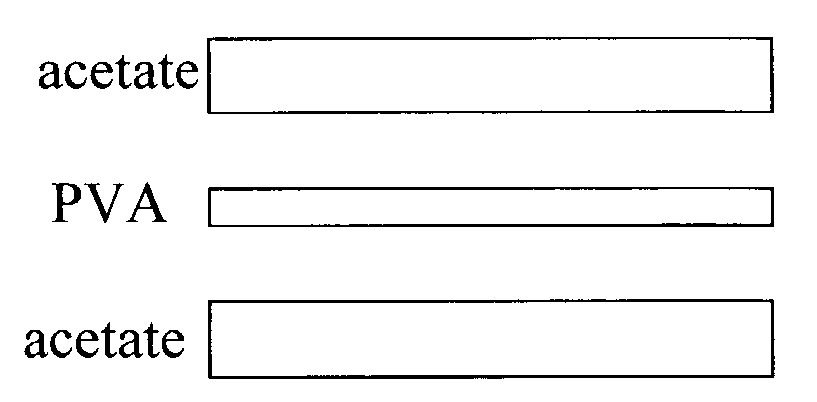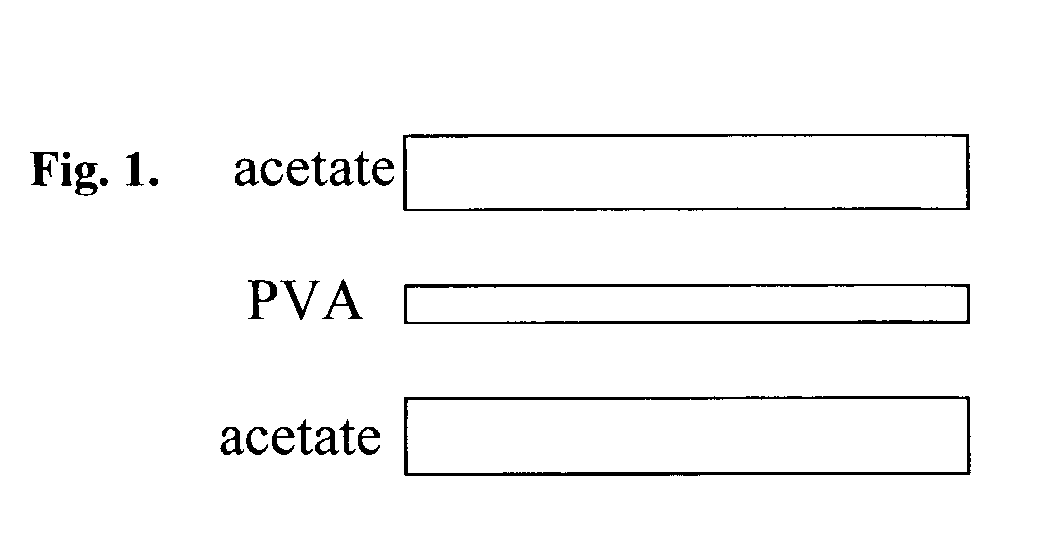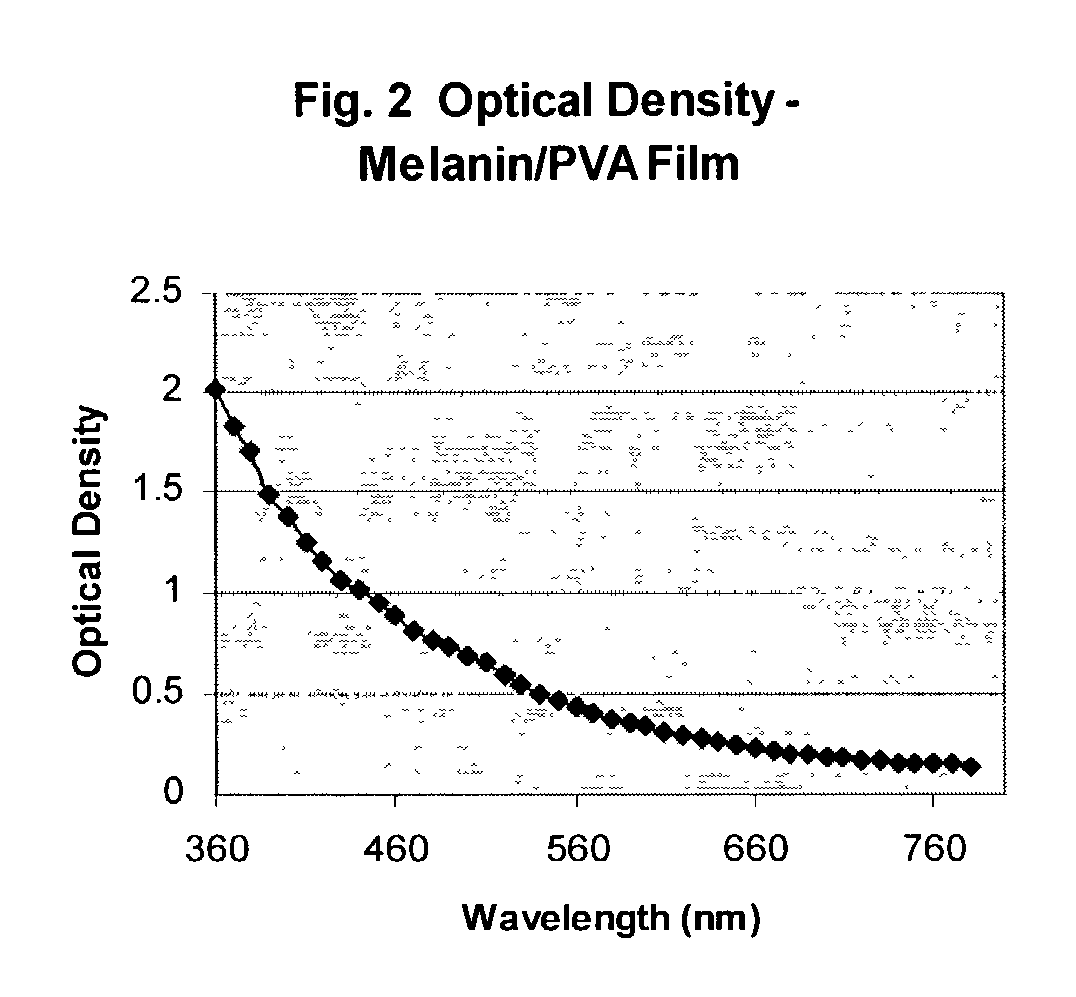Melanin polyvinyl alcohol plastic laminates for optical applications
a technology of melanin and polyvinyl alcohol, applied in the field of photoprotective benefits of melaninbased light filters, can solve the problems of insufficiently low haze for optical applications, difficult to achieve a level of dispersion, and take strong and costly measures, so as to achieve the effect of reducing the risk of damage and greatest risk of photochemical damage to the ey
- Summary
- Abstract
- Description
- Claims
- Application Information
AI Technical Summary
Benefits of technology
Problems solved by technology
Method used
Image
Examples
embodiment
Preferred Embodiment
[0025]In the preferred embodiment of this invention, aqueous suspensions of melanin are made, according to the traditional methods, as discussed in Nicolaus, by dissolving a melanin precursor into water and by adding an oxidizing agent such as oxygen or potassium persulphate, and by increasing the pH, by adding sodium hydroxide, for example. Under these conditions, hydrophilic or aqueous melanin is produced and, in this invention, the pH is insured to remain sufficiently high and di-valent metal ions are ensured to be absent, so that the particle sizes of the final melanin solution are less than 100 A as can be verified by small-angle X-ray scattering.
[0026]To make the aqueous solution of PVA, PVA powder is put into water and the suspension is heated to 100 degrees Celsius, in order to completely disperse the PVA. The two aqueous suspensions of melanin and PVA are combined and form a well-dispersed suspension of PVA and melanin. A melanin-containing PVA film is c...
example 1
[0028]2 grams of PVA powder were dispersed into 100 ml of boiling water. The water was obtained by distillation and filtration and had an electrical resistance of 20 Mega-Ohms to ensure that the concentration of divalent or trivalent metal ions was kept adequately low. The pH of the aqueous-PVA suspension thus formed was between 7 and 7.5. Aqueous melanin was synthesized, using L-dopa as the precursor, according to the method described by Sealy (“Structure and reactivity of melanins,” In: Free Radicals in Biology, W. A. Pryor (ed), New York: Academic Press, 1980, pp. 209–259). The water was obtained from the same source as that used to make the PVA suspension. Its pH was adjusted to be 7.5 by using sodium hydroxide and its concentration was adjusted to be 0.1 mg / ml by evaporation of some of the water to yield a 10% melanin dispersion in water. 2 ml of the 10% melanin suspension, at a temperature of 25 degrees Celsius was introduced into the 100 ml aqueous suspension of PVA to form a...
PUM
| Property | Measurement | Unit |
|---|---|---|
| wavelength | aaaaa | aaaaa |
| thick | aaaaa | aaaaa |
| pH | aaaaa | aaaaa |
Abstract
Description
Claims
Application Information
 Login to View More
Login to View More - R&D
- Intellectual Property
- Life Sciences
- Materials
- Tech Scout
- Unparalleled Data Quality
- Higher Quality Content
- 60% Fewer Hallucinations
Browse by: Latest US Patents, China's latest patents, Technical Efficacy Thesaurus, Application Domain, Technology Topic, Popular Technical Reports.
© 2025 PatSnap. All rights reserved.Legal|Privacy policy|Modern Slavery Act Transparency Statement|Sitemap|About US| Contact US: help@patsnap.com



